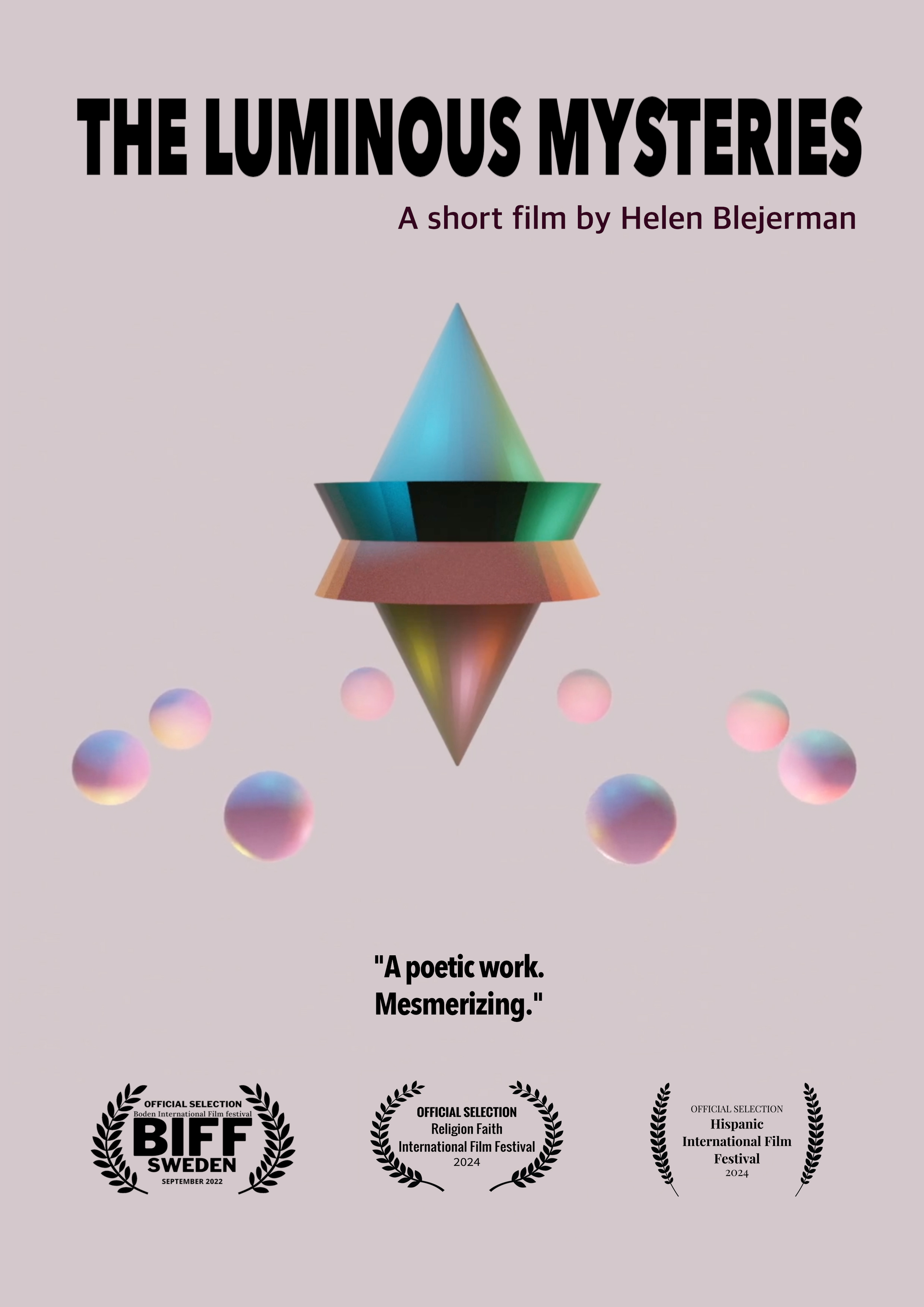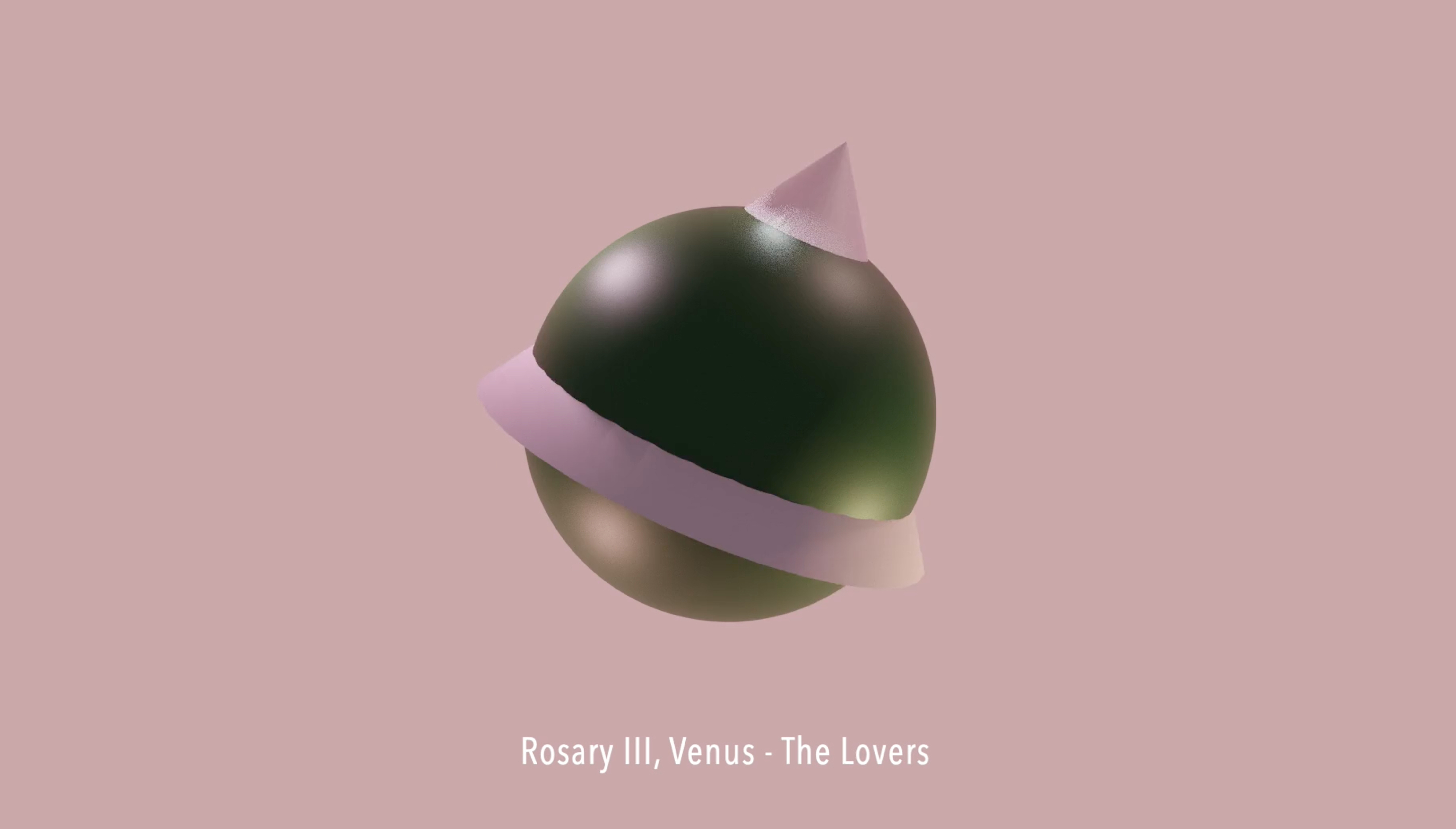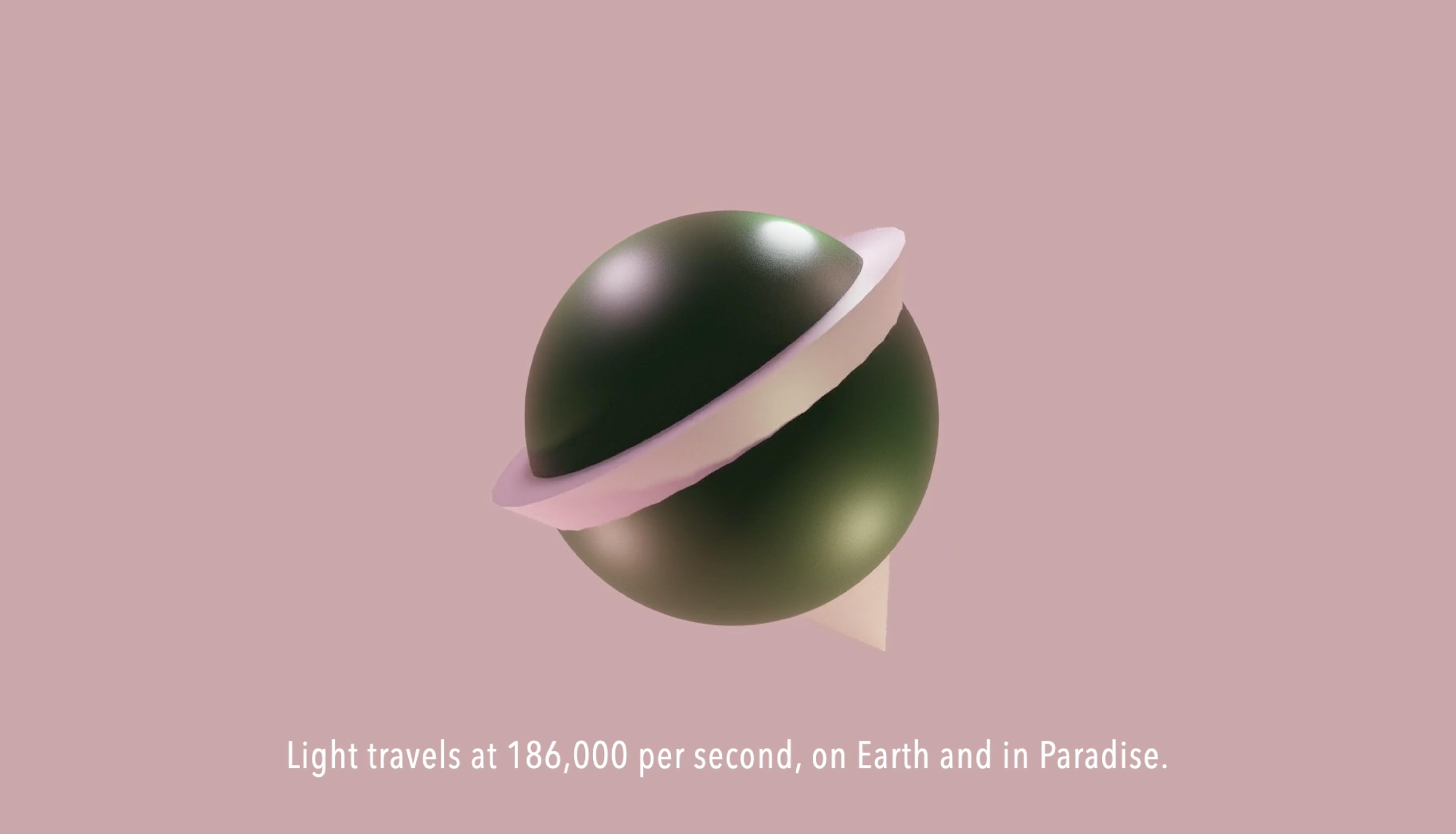Helen Blejerman
Helen Blejerman is a Mexican artist based in the UK. She works across different media, including film, exploring the spiritual aspect of survivors in gender-based conflict, and the nature of clandestine burial sites connected to the soil and the landscape. Helen works as an associate lecturer in the Fine Art Department at Sheffield Hallam University, where she is also doing a practice-based PhD. Visit helenblejerman.com to see more of her work.
Could you briefly describe your project for our audience?
The Luminous Mysteries is a short film showing nine animated planets, also monumental single beads from the Holy Rosary. These spin one by one in the centre of a celestial void. The film draws from Dante Alighieri’s Heaven in his Divine Comedy. It shows text that guides the viewer as Virgil guided Dante in an ascension through Paradise. Virgil, who symbolises reason, disappears, and we hear a version of the Ave Maria, but the sound becomes silent when Dante is faced with a surprise in the Highest Heaven.

What were your main aspirations or goals when creating this project?
The film was dedicated to Claudia Uruchurtu, a Mexican woman who was murdered in 2021, and whose body has not been found. The word anima in Latin means ‘soul’, so I am exploring ways in which animation can contribute to the conversation about loss and the grief of the families who lost a person to murder and have not found the body therefore have not had a funeral.


Share some memorable moments from the shooting process or any pleasant surprises.
Although at one point I had tears in my eyes while making the film, it was a surprise seeing the number of people crying when watching it. Or mentioning how moved they were by it.
Who is the primary target audience for your film, and what do you hope they will take away from it?
I want to think that people who have experienced loss can enjoy this short film. Particularly loss from conflict and violence, but generally grief of any kind. People who have faced the irreversible aspect of death. The poet Rumi famously said ‘Don’t grieve. Anything you lose comes round in another form’. I believe that form is art.

How would you define your unique filmmaking style, and what distinct qualities characterize your film?
I am an artist that works with film amongst other media. I know art does not solve problems but generates questions around them. My work explores ways to create aesthetics directly from the researched topic. As an artist, I am a researcher, so I want to think that the final piece illuminates an aspect of knowledge without explanations and definitions, only with its materiality. I hope my work helps the viewer connect to an aspect of the human experience. This film focused on animation, as anima, exploring the potential experience of the ‘soul’ of a victim when the body has not been found.
Do you have a filmmaker or source of inspiration who has influenced your work?
Tarkovsky, Bergman, Sokurov, Bresson, Fellini, Pasolini, Buñuel, Godard, Jarman, Varda, Akerman, Denis, amongst a long list.
Share a couple of your favorite films and what resonates with you about them.
In the film Blue (1993) by English artist Derek Jarman, we see a single shot with a deep blue screen. He describes in a diaristic way with a voice over his experience with AIDS and, as a result, losing his sight and seeing only shades of blue. Jarman died months later from AIDS-related complications. I find it fascinating that the aesthetics was chosen from the filmmaker’s experience. The film succeeds amazingly in making you understand better his experience and gradual blindness.
In the surreal film The Exterminating Angel, in Spanish ‘El Ángel Exterminador’(1962), by Luis Buñuel, we see a group of people at a dinner party at a mansion. Gradually, we understand that no person can leave or enter the house. The film has no logic to follow. We see a bear, and we see sheep. Some people die, some get ill, and some use magic.
What fascinates me about this film is the collective change of behaviour and the potential self-inflicted situation. It makes me think of the power of the mind as a self-destructive weapon, mainly fed by and feeding structures of power.
Where do you typically find inspiration for your film projects?
Art, music and literature inspire me to make work. We are fortunate to have access, nowadays, to all types of art-related and film-related archives.
Could you briefly describe your project for our audience?
The Luminous Mysteries is a short film showing nine animated planets, also monumental single beads from the Holy Rosary. These spin one by one in the centre of a celestial void. The film draws from Dante Alighieri’s Heaven in his Divine Comedy. It shows text that guides the viewer as Virgil guided Dante in an ascension through Paradise. Virgil, who symbolises reason, disappears, and we hear a version of the Ave Maria, but the sound becomes silent when Dante is faced with a surprise in the Highest Heaven.

What were your main aspirations or goals when creating this project?
The film was dedicated to Claudia Uruchurtu, a Mexican woman who was murdered in 2021, and whose body has not been found. The word anima in Latin means ‘soul’, so I am exploring ways in which animation can contribute to the conversation about loss and the grief of the families who lost a person to murder and have not found the body therefore have not had a funeral.


Share some memorable moments from the shooting process or any pleasant surprises.
Although at one point I had tears in my eyes while making the film, it was a surprise seeing the number of people crying when watching it. Or mentioning how moved they were by it.
Who is the primary target audience for your film, and what do you hope they will take away from it?
I want to think that people who have experienced loss can enjoy this short film. Particularly loss from conflict and violence, but generally grief of any kind. People who have faced the irreversible aspect of death. The poet Rumi famously said ‘Don’t grieve. Anything you lose comes round in another form’. I believe that form is art.

How would you define your unique filmmaking style, and what distinct qualities characterize your film?
I am an artist that works with film amongst other media. I know art does not solve problems but generates questions around them. My work explores ways to create aesthetics directly from the researched topic. As an artist, I am a researcher, so I want to think that the final piece illuminates an aspect of knowledge without explanations and definitions, only with its materiality. I hope my work helps the viewer connect to an aspect of the human experience. This film focused on animation, as anima, exploring the potential experience of the ‘soul’ of a victim when the body has not been found.
Do you have a filmmaker or source of inspiration who has influenced your work?
Tarkovsky, Bergman, Sokurov, Bresson, Fellini, Pasolini, Buñuel, Godard, Jarman, Varda, Akerman, Denis, amongst a long list.
Share a couple of your favorite films and what resonates with you about them.
In the film Blue (1993) by English artist Derek Jarman, we see a single shot with a deep blue screen. He describes in a diaristic way with a voice over his experience with AIDS and, as a result, losing his sight and seeing only shades of blue. Jarman died months later from AIDS-related complications. I find it fascinating that the aesthetics was chosen from the filmmaker’s experience. The film succeeds amazingly in making you understand better his experience and gradual blindness.
In the surreal film The Exterminating Angel, in Spanish ‘El Ángel Exterminador’(1962), by Luis Buñuel, we see a group of people at a dinner party at a mansion. Gradually, we understand that no person can leave or enter the house. The film has no logic to follow. We see a bear, and we see sheep. Some people die, some get ill, and some use magic.
What fascinates me about this film is the collective change of behaviour and the potential self-inflicted situation. It makes me think of the power of the mind as a self-destructive weapon, mainly fed by and feeding structures of power.
Where do you typically find inspiration for your film projects?
Art, music and literature inspire me to make work. We are fortunate to have access, nowadays, to all types of art-related and film-related archives.

